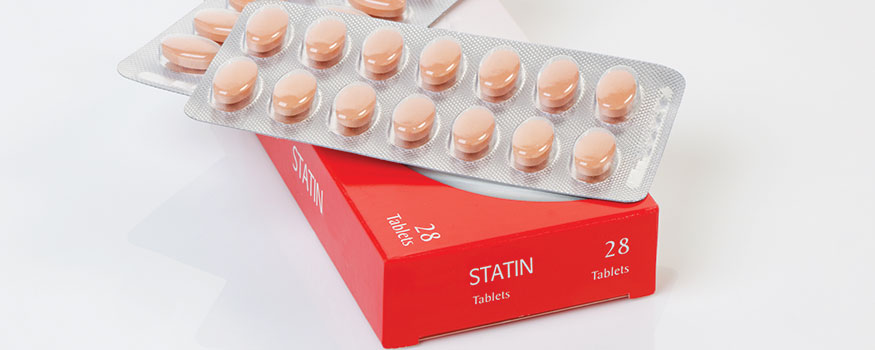Management of biofilm recommendations
The Journal of Wound Care has published “Recommendations for the management of biofilm: a consensus document,” developed through the Italian Nursing Wound Healing Society.
The panel that created the document identified 10 interventions strongly recommended for clinical practice; however, panel members noted that, “there is a paucity of reliable, well-conducted clinical trials which have produced clear evidence related to the effects of biofilm presence.”
Statins reduce CVD risk in patients with diabetes
Statins reduce the risk of cardiovascular disease (CVD) and death in patients with type 1 diabetes without a history of CVD, according to a study published in Diabetes Care.
“Association between use of lipid-lowering therapy and cardiovascular diseases and death in individuals with type 1 diabetes” included more than 24,000 individuals from the Swedish National Diabetes Register who were followed for a mean of 6 years.
International diabetes organizations support bariatric surgery
“Metabolic surgery in the treatment algorithm for type 2 diabetes: a joint statement by international diabetes organizations,” published in Diabetes Care, supports including metabolic (bariatric) surgery as a treatment option for people with type 2 diabetes who are obese. The statement notes when metabolic surgery is recommended and when it should be considered.
The 2nd Diabetes Surgery Summit was convened in collaboration with leading diabetes organizations to develop the guidelines. The multidisciplinary group included 48 international clinicians and scholars from leading diabetes associations; 75% were not surgeons. Draft conclusions were presented and opened to public comment. Following comment, they were amended.
Medicare-VHA dual use associated with poorer chronic wound healing
Veterans with chronic wounds who are enrolled in Medicare and access care through Medicare and the Veterans Health Affairs (VHA) experience poorer healing of chronic wounds, according to a study in Wound Repair and Regeneration.
“Medicare-VHA dual use is associated with poorer chronic wound healing” was a retrospective study that followed 227 Medicare-enrolled individuals who used the VHA and who had a chronic lower limb wound. Individuals were followed until the wound was healed or up to 1 year.
“Dual use was associated with a significantly lower hazard of wound healing compared to VHA-exclusive use,” the study authors note. The risks of amputation or death were higher for dual users.
Sacral dressing may help prevent ulcers in ICU patients
“Prophylactic sacral dressing for pressure ulcer prevention in high-risk patients,” published in the American Journal of Critical Care, reports that the dressing reduced the number of sacral pressure ulcers in three ICUs by 3.4 to 7.6 per 1,000 patient days depending on the unit.
Data were collected for 7 months and compared to 7 months before the dressings were used, and patients were identified as high risk by using an evidencebased tool. The study authors note that heightened awareness by the care team and increased education also are key in preventing pressure ulcers.
Scale has limited ability to predict pressure ulcers
A study that evaluated the Spinal Cord Injury Pressure Ulcer Scale (SCIPUS) during acute care and inpatient rehabilitation following spinal cord injury (SCI) found that the scale could predict pressure ulcers occurring within 2 to 3 days after it was administered in acute care, but didn’t predict ulcer development over a longer term within acute or inpatient rehabilitation.
“Predictive validity of the Spinal Cord Injury Pressure Ulcer Scale (SCIPUS) in acute care and inpatient rehabilitation in individuals with traumatic spinal cord injury,” published in NeuroRehabilitation, used retrospective analysis to determine the findings.
Braden Q and Glamorgan scales compared in children
The Journal of Tissue Viability has published “A comparison of the performance of the Braden Q and the Glamorgan paediatric pressure ulcer risk assessment scales in general and intensive care paediatric and neonatal units,” which found that both work well in these settings.
The study authors note, however, that the Braden Q may be better at predicting risk in general pediatric units. More than 500 pediatric admissions were included in the study.
Axillary reverse mapping may reduce lymphedema
Researchers report that using axillary reverse mapping during surgery to help identify lymph nodes and vessels reduces the risk of lymphedema in patients undergoing sentinel lymph node biopsy and/or axillary node dissection.
A total of 654 patients participated in “Does axillary reverse mapping prevent lymphedema after lymphadenectomy?,” published in Annals of Surgery.
Muslims and QOL after ostomy surgery
Muslims who undergo ostomy surgery experience significant reductions in health-related quality of life (QOL) — greater reductions than seen in non-Muslim patients, according to a study in Journal of Wound Care and Ostomy.
“Quality of life after ostomy surgery in Muslim patients: a systematic review of the literature and suggestions for clinical practice” notes that factors associated with the difference include “psychological factors, social isolation, underreporting of complications, and sexual dysfunction leading to breakdown of marital relations as well as diminished religious practices.”
Chronic venous insufficiency consensus statement
Circulation has published “Investigation of chronic venous insufficiency: a consensus statement,” which “provides an up-to-date account of the various methods available for the investigation of chronic venous insufficiency of the lower limbs (CVI), with an outline of their history, usefulness, and limitations.”







